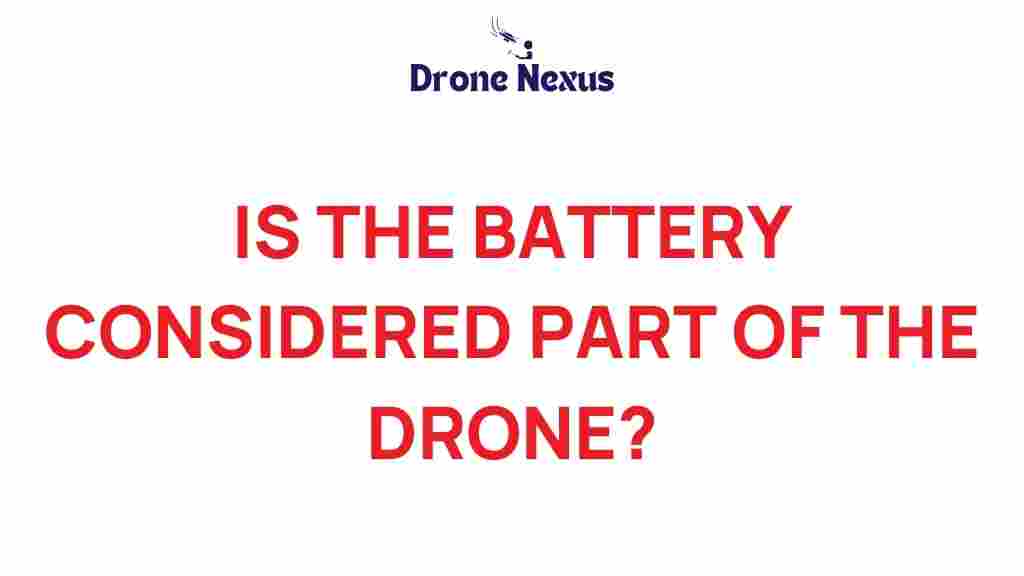Is the Battery Considered Essential for Drone Functionality?
The drone battery is one of the most critical components of any drone. Without it, a drone simply cannot operate. But how does the battery affect overall functionality, and what should drone enthusiasts know about keeping their batteries in optimal condition? This article delves into the importance of the drone battery, exploring its role, types, maintenance, and troubleshooting tips that every drone operator should consider.
Understanding the Role of the Drone Battery
At the heart of every drone lies the drone battery. It’s responsible for powering the motors, sensors, and onboard electronics. Without a fully charged and functional battery, a drone cannot take off, hover, or navigate through the air. Here’s why the battery is so essential:
- Power Source: The battery provides the necessary energy to the drone’s motors and systems.
- Flight Time: The quality and capacity of the battery directly influence how long the drone can stay in the air.
- Weight Distribution: The weight of the battery impacts flight dynamics and stability.
- Recharge Cycle: Understanding how the battery charges and discharges can optimize flight schedules.
Types of Drone Batteries
There are several types of drone batteries available on the market, each with its advantages and disadvantages. The most common types include:
- Lithium Polymer (LiPo) Batteries: These are the most popular among hobbyists and professionals due to their high energy density and lightweight nature. They offer excellent performance but require careful handling and maintenance.
- Lithium-Ion (Li-ion) Batteries: Known for their longevity and ability to retain charge over time, Li-ion batteries are less common in drones but are used in some models for their efficiency.
- Nickel-Metal Hydride (NiMH) Batteries: These batteries are less popular for drones due to their lower energy density and heavier weight, but they are safer and more stable.
Choosing the Right Drone Battery
Selecting the correct drone battery is crucial for optimal performance. Consider the following factors:
- Capacity: Measured in milliamp-hours (mAh), higher capacity batteries provide longer flight times.
- Voltage: The voltage rating affects the power output; ensure your drone is compatible with the battery voltage.
- Weight: Lighter batteries improve flight efficiency, but ensure they provide sufficient power.
- Discharge Rate: This affects how quickly a battery can deliver its energy; a higher rating is needed for high-performance drones.
Maintaining Your Drone Battery
Proper maintenance of the drone battery is essential for prolonging its lifespan and ensuring optimal performance. Follow these tips:
- Regular Charging: Always charge your battery after use to avoid deep discharges, which can damage the cells.
- Storage Conditions: Store batteries in a cool, dry place, ideally at 50% charge to prolong their lifespan.
- Avoid Overcharging: Use a quality charger that stops charging when the battery reaches its full capacity.
- Check for Damage: Regularly inspect your batteries for any signs of swelling, leakage, or physical damage before use.
Step-by-Step Process for Battery Setup
Setting up your drone battery correctly is essential for safe and efficient operation. Follow these steps:
- Choose the Right Battery: Ensure you have a battery that meets your drone’s specifications.
- Charge the Battery: Connect the battery to an appropriate charger and monitor the charging process.
- Install the Battery: Carefully insert the battery into the drone, ensuring it fits securely.
- Power On the Drone: Turn on the drone and ensure all systems are functional before takeoff.
- Test Flight: Conduct a test flight to ensure everything operates smoothly with the new battery.
Troubleshooting Common Battery Issues
Even with the best care, you may encounter problems with your drone battery. Here are some common issues and their solutions:
- Short Flight Time: If your drone is not flying as long as it used to, check for battery wear or damage. Consider replacing it if it’s aging.
- Battery Not Charging: Ensure the charger is functioning correctly and the battery’s connectors are clean and undamaged.
- Overheating: If the battery gets too hot during charging or flight, cease use immediately, as this can be a safety hazard.
- Swollen Battery: Do not use a swollen battery; dispose of it safely and replace it with a new one.
Conclusion: The Indispensable Role of the Drone Battery
In conclusion, the drone battery is undoubtedly an essential part of drone functionality. From powering the motors to enabling flight, its significance cannot be overstated. Understanding the various battery types, proper maintenance practices, and troubleshooting common issues can enhance your flying experience and prolong the life of your drone. For those looking to dive deeper into drone technology, consider exploring additional resources on drone maintenance and safety.
Always remember that a well-maintained battery is key to enjoying the thrilling experience of flying a drone. Whether you’re a hobbyist or a professional, investing time in understanding and caring for your drone battery will pay off in the long run.
For more information on drone technologies and advancements, check out this external link.
This article is in the category Technology and created by DroneNexus Team
